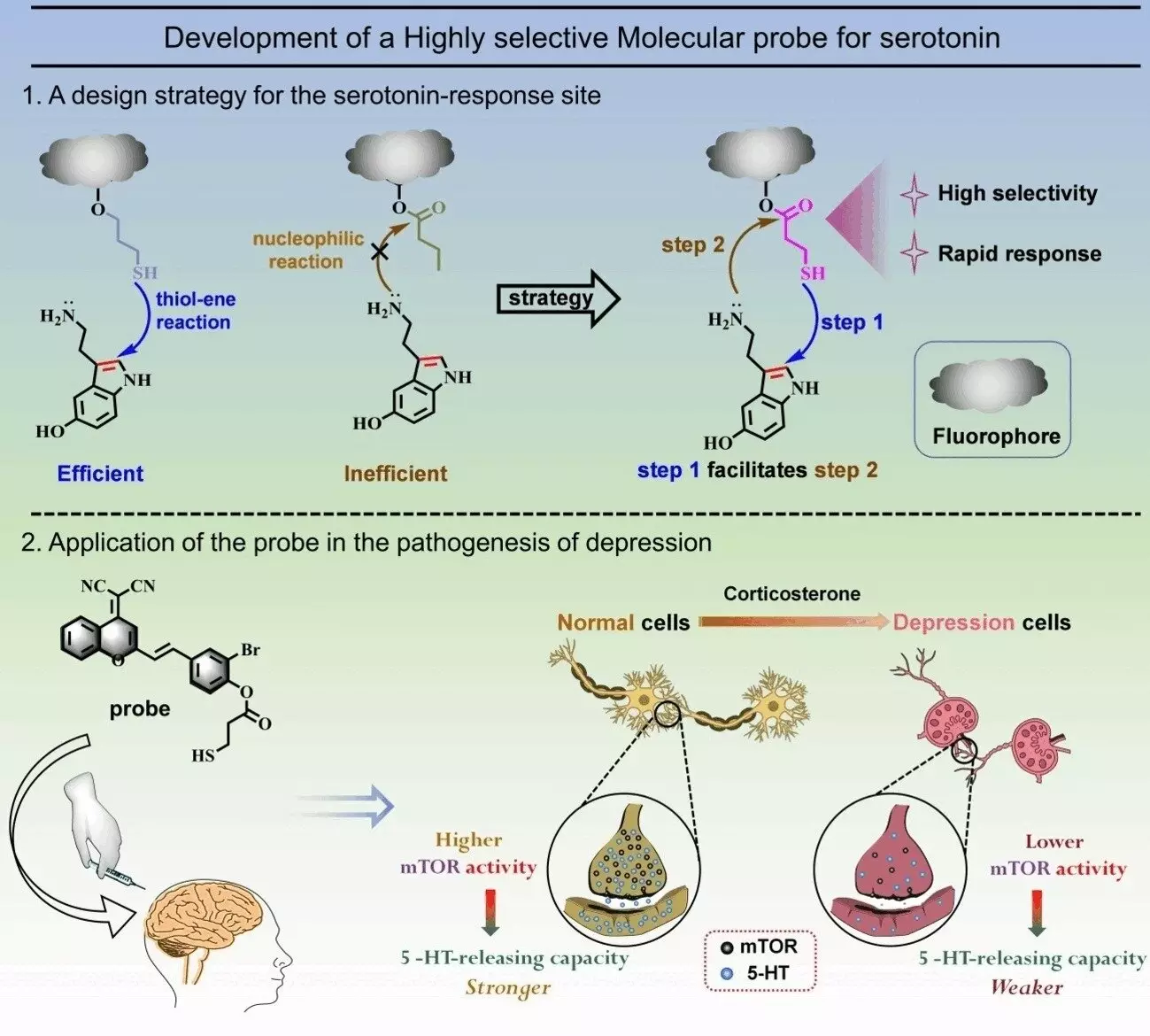The relationship between serotonin and depression has long been a topic of debate in the medical and scientific communities. A recent study by a Chinese research team has shed new light on this complex relationship by developing a highly sensitive and selective fluorescent probe for imaging serotonin processes. This probe has offered preliminary results from both cell and animal models, providing valuable insights into the role of serotonin in depression.
Led by Weiying Lin at Guangxi University in China, the research team set out to create a molecular fluorescent probe that could selectively detect serotonin. Despite the structural similarities between serotonin and other biomolecules such as melatonin and tryptophan, the team discovered subtle differences in reactivity that allowed for the development of a specialized reactive group. By attaching this reactive building block to a fluorescent dye, the probe could be switched “on” when it came into contact with serotonin, offering a highly sensitive means of detecting the presence of the neurotransmitter.
Using this newly developed fluorescent probe, the research team was able to image neuron cell lines and mouse models to study the role of serotonin in depression. Surprisingly, the results showed that serotonin levels were nearly equally high in both normal and “depressed” cells. However, the key difference lay in the ability of the depressive cells to expel serotonin in response to stimulation, with significantly lower levels of release compared to normal cells.
These findings have significant implications for the treatment of depression, particularly in terms of understanding the mechanisms underlying the disorder. The study hinted at a potential link between the activity of mTOR, a biomolecule involved in cellular signaling pathways, and the ability of neurons to release serotonin. By activating mTOR, the team was able to increase serotonin release in depressive cells, while inhibiting mTOR reduced serotonin release in normal cells.
The results of this study challenge the traditional view that low serotonin levels are the primary cause of depression. Instead, the research suggests that the ability of neurons to release serotonin may play a more critical role in the development of the disorder. By targeting mTOR activity, researchers may be able to develop new and more effective treatments for depression that focus on enhancing serotonin release rather than simply increasing serotonin levels.
The correlation between serotonin and depression is a complex and multifaceted issue that requires further study and exploration. The development of a highly selective fluorescent probe for imaging serotonin processes has provided valuable insights into the mechanisms underlying depression and offers new perspectives on the role of serotonin in the disorder. By understanding the intricate relationship between serotonin, neuronal function, and mTOR activity, researchers may be able to revolutionize the treatment of depression and improve outcomes for patients worldwide.


Leave a Reply